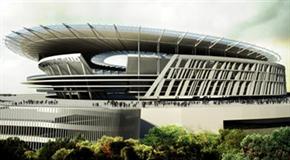Features
U.S. Investors Fund New Roma Stadium

Pallotta, an Italian American investor who’s been Roma president since August 2012, wants the club to have a new stadium inspired by the Colosseum, the famous 2,000-year-old landmark on the edge of the Italian capital.
The new build has the potential to be a 60,000-seater, although changes to the surrounding traffic infrastructure may see the final cost running out at much more than quoted. Goldman Sachs is arranging financing with a mix of bank loans and equity, with details to be announced in about two weeks when the project is to be formally presented to the Rome municipality for planning approval.
Italian property developer Luca Parnasi hs been named as one of the partners but Pallotta has also said he’s held preliminary talks with potential investors from China.
He also said he’ll be talking to UniCredit, the Italian bank that holds a minority stake in AS Roma.
Although American ownership of English soccer clubs has become commonplace, including Manchester United, Liverpool and Aston Villa, in 2011 Palotta and three fellow Boston-based investors became the first American owners of an Italian club.
“The Stadio Olimpico has been a great place for us to play but it has clearly had its time,” Pallotta explained. “The new stadium is clearly going to give us a competitive advantage.” It’s hoped it will provide the struggling soccer club and the near-bankrupt city of Rome with an investment boost of up to euro 1 billion ($1.38 billion).
The stadium will be known as the Stadio della Roma until a naming rights deal materializes.
Designed by American architect Dan Meis, who has drawn up the plans for numerous stadiums and arenas in the United States, the building will have “an outer wall that will be a new vision of the Colosseum.”
It will be in the city’s Tor di Valle district, about halfway between downtown Rome and Fiumicino airport.
Rome Mayor Ignazio Marino has warned that the new stadium can’t be opened until local infrastructure problems have been tackled, but the soccer club is hoping they can be resolved in time for the start of the 2016-17 season.
For years, Roma has shared the Stadio Olimpico with city rival Lazio, but that stadium features a running track and poor sight lines for football.